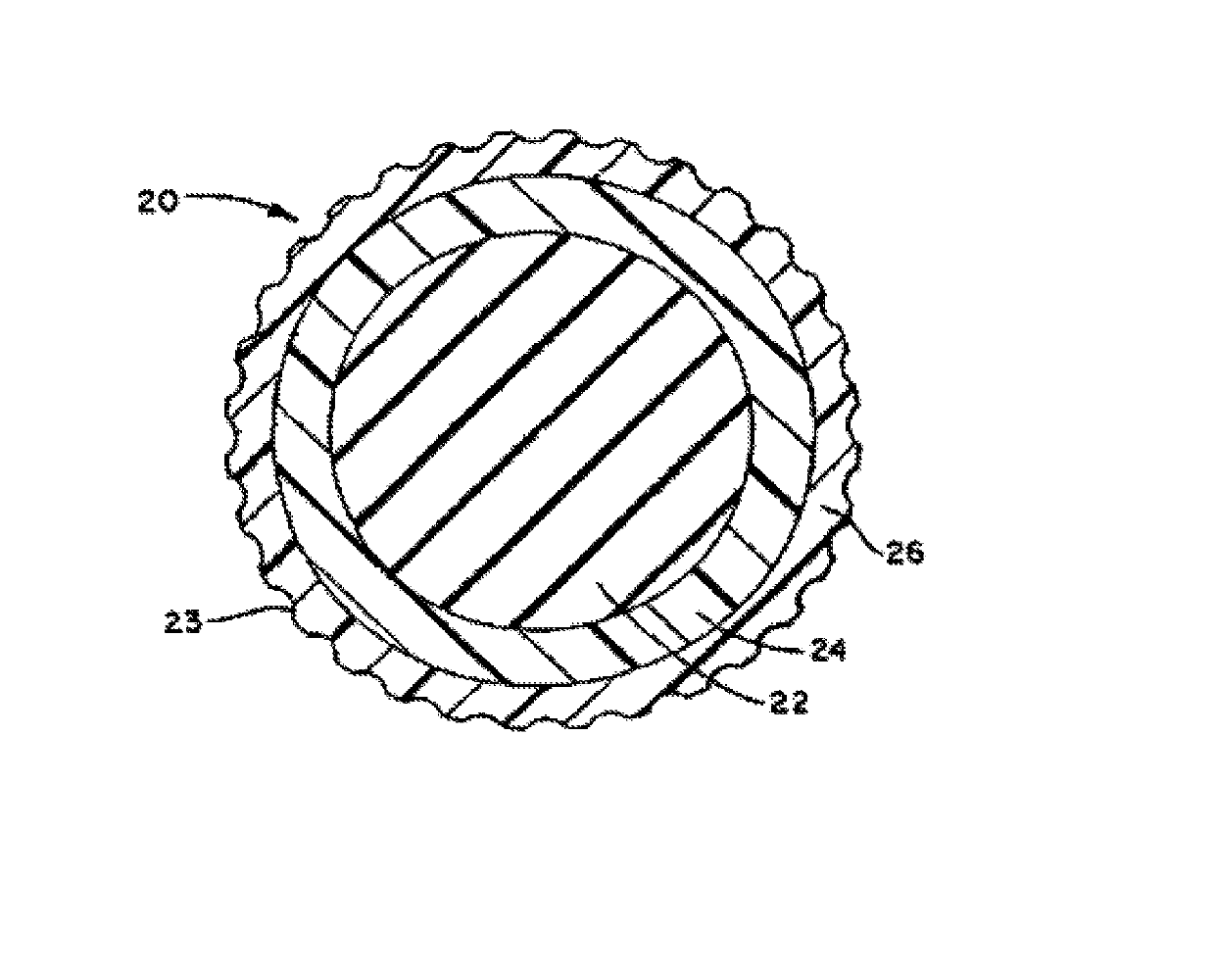Low compression golf ball
a golf ball and compression technology, applied in the field of golf balls, can solve the problems of significant detrimental effect on the resilience of golf balls, unpleasant feeling of golfers, and hardness of initial two-piece golf balls, and achieve the effects of soft feel, acceptable impact durability, and distance performan
- Summary
- Abstract
- Description
- Claims
- Application Information
AI Technical Summary
Benefits of technology
Problems solved by technology
Method used
Image
Examples
example 1
[0044]A mantle was injection molded around the solid core described above. The material used for molding the mantle was a terpolymer comprising of 76% ethylene, ˜8.5% acrylic acid, and ˜15.5% by weight n-butyl acrylate, wherein 100% of the acrylic acid groups are neutralized with Magnesium ions. This material further comprises a level of between 10 and 150 phr of a fatty acid, specifically eurcic acid. This material is available from E.I. DuPont de Nemours and Company, under the product name DuPont® HPF® AD1172.
[0045]
TABLE 3DuPont ® HPF ® PropertiesShore ‘D”Flexural ModulusGradeHardness(psi)HPF 10005231,000HPF 20005512,000HPF AD1172336,500
[0046]The cover of the golf ball of Example 1 was molded using a blend of ionomers as follows:[0047]About 40% by weight of a copolymer comprising ˜85% by weight of ethylene and ˜15% by weight of methacrylic acid, wherein ˜40 to 70% of the carboxylic acid is neutralized using Sodium ions, and[0048]About 40% by weight of a copolymer comprising ˜85% b...
PUM
| Property | Measurement | Unit |
|---|---|---|
| diameter | aaaaa | aaaaa |
| diameter | aaaaa | aaaaa |
| diameter | aaaaa | aaaaa |
Abstract
Description
Claims
Application Information
 Login to view more
Login to view more - R&D Engineer
- R&D Manager
- IP Professional
- Industry Leading Data Capabilities
- Powerful AI technology
- Patent DNA Extraction
Browse by: Latest US Patents, China's latest patents, Technical Efficacy Thesaurus, Application Domain, Technology Topic.
© 2024 PatSnap. All rights reserved.Legal|Privacy policy|Modern Slavery Act Transparency Statement|Sitemap

